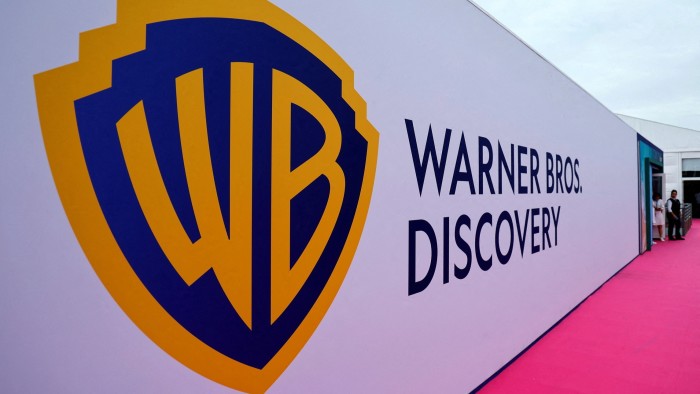Unlock the White House Watch newsletter for free
Your guide to what Trump’s second term means for Washington, business and the world
Mega deals are back with a vengeance. A post “liberation day” malaise in activity after US President Donald Trump first picked trade fights with tariff rises is over. The chief executives of the world’s big companies have decided to get back in the game.
In the past month alone, Electronic Arts was taken private for $55bn in the biggest leveraged buyout on record, Warren Buffett’s Berkshire Hathaway snapped up OxyChem for $10bn, and American Water Works merged with Essential Utilities in a $63bn transaction. And more big ones are expected to come, including the possible acquisition of Warner Bros Discovery, the Hollywood studio behind HBO and CNN which could be taken over for nearly $100bn including debt.
“It’s probably one of the busiest times I’ve ever seen in my long career,” says Leon Kalvaria, global chair of banking at Citigroup. “Equity markets are at all-time highs, boardroom confidence is strong, and companies are evaluating a wide range of transactions.”
One straightforward explanation is that Trump’s new, laissez-faire administration has given corporate America the green light for deals. Washington has relaxed antitrust scrutiny, fast-tracked foreign-investment approvals and, crucially, stopped wagging its finger at big business. Deals in highly regulated sectors regarded as highly difficult to pull off in the past are now possible.
The world remains fraught: global trade frictions, a government shutdown in Washington, US policy uncertainty and signs of cracks emerging in the shadow-banking system are just a few of the uncertainties facing companies. But executives have stopped waiting for clarity on all of this. Instead, they taking their cue from solid earnings and a resurgent stock market.
“The economy — the private sector, in many ways — is increasingly decoupled and de-risked from the political environment,” says Blair Effron, co-founder of Centerview Partners. “I don’t just mean the US, I mean anywhere, in any jurisdiction.”
According to Morgan Stanley, global mergers and acquisition volumes jumped 43 per cent year-on-year in the third quarter, the strongest rebound in more than a decade. The bank forecasts a 32 per cent rise overall in 2025, powered by a rare “triple easing” in monetary, fiscal and regulatory policy. It calls this the start of a “multiyear rebound” and says investors need to consider the possibility of an even larger “boom”.
Kalvaria concedes the world is hardly stable but confidence is what drives activity. “Right now CEOs feel relatively comfortable projecting their businesses forward and acting strategically,” he says. “It’s an unusual environment: plenty of uncertainty, yet very high boardroom confidence.”
Effron calls today’s growth environment “just right” for dealmaking. A middle ground in economic conditions, with modest growth but no collapse, breeds productive anxiety. Sellers are tempted; buyers are emboldened. Initial public offering plans dusted off.
Kalvaria adds another factor: pent-up demand. “Private-equity firms haven’t had many realisations in recent years and haven’t returned as much capital to investors as they’d like,” he says. “So we’re seeing a lot of movement — asset sales, new investments, a more robust IPO market. Private equity often acts as a precursor to broader activity.”
Roughly $4tn of private-equity dry powder, committed funding but unspent, is available for deals. That capital, colliding with receptive financing markets, is helping to fuel the M&A machine. US regulatory permissiveness after a deterrent approach in recent years is also amplifying the rush. Overall, global dealmaking for transactions above $10bn is on track to hit an all-time high this year despite the overall number of deals still running at pandemic level lows.
Morgan Stanley flags three main risks to this outlook: a sharp slowdown in global growth, a return of policy uncertainty and tighter credit. So far, none look imminent. Credit markets remain wide open, borrowing costs are falling and inflation has cooled. And optimism seems to trump everything even if there are questions on how long the window may stay open.
“We feel there’s a lot of animal spirits at the moment. Big M&A is back. It’s maybe one of the biggest last few months we’ve had in a long, long time,” says Doug Petno, head of commercial banking at JPMorgan Chase. “There is a strategic imperative to be global, big, diversified, integrate your operations — and there’s also a sense that you have a finite window of time to complete large M&A before the regulatory sentiment may shift back.”
Corporate America has decided that hesitation is now the greater risk. After years of caution, CEOs are betting that while the world will stay messy, that matters less.
jfk@ft.com
Source link









